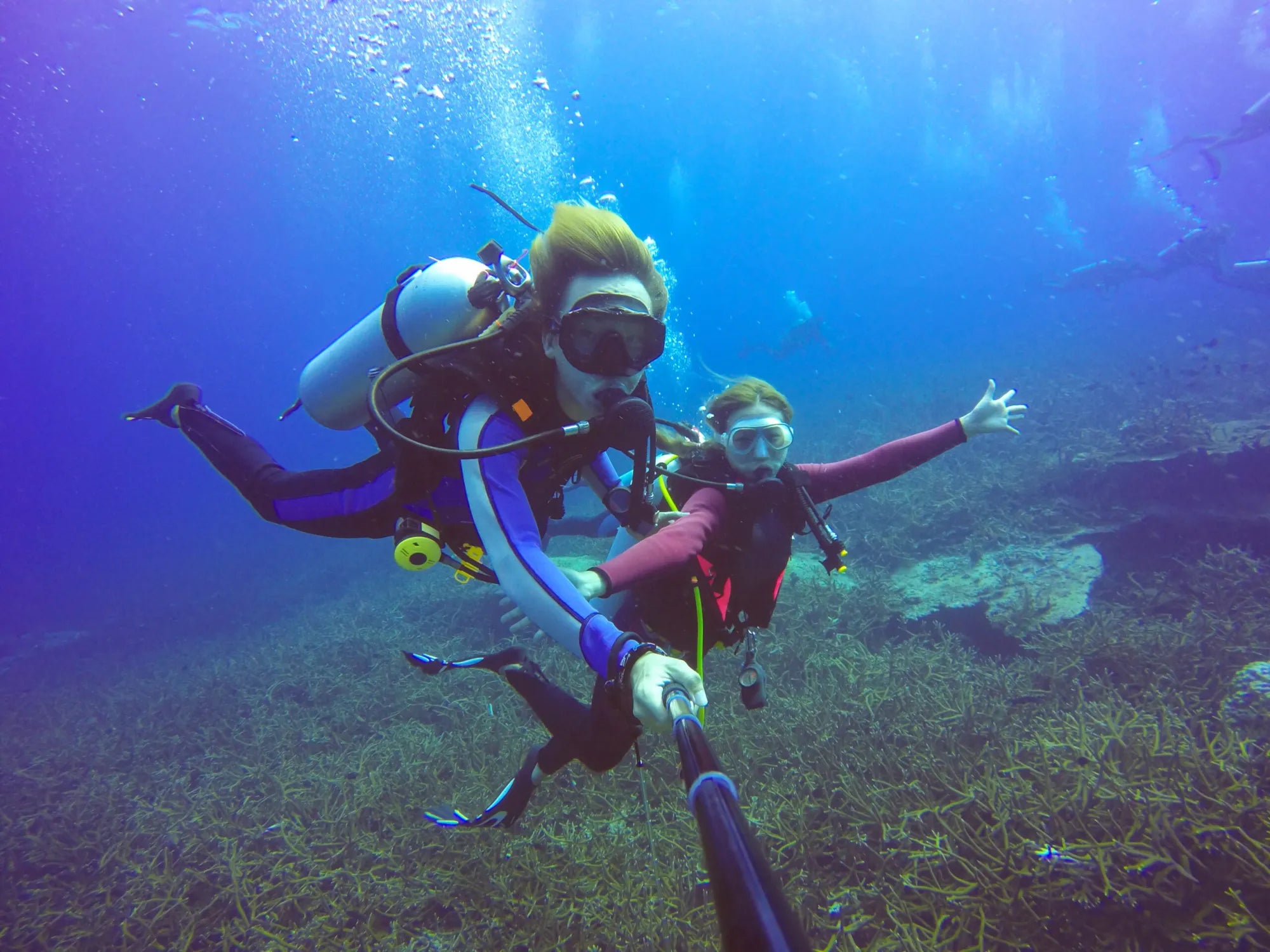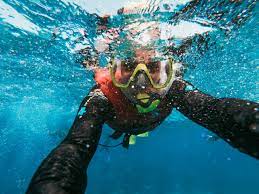Here is a 5-step guide to safely refill your mini scuba tank: first, always inspect the tank for damage and ensure its current hydrotest is within the 5-year validity period; then, using a compatible air compressor rated for at least 3000 PSI, slowly fill the tank while frequently checking its temperature to prevent overheating, which should not exceed 50°C (122°F); finally, securely seal the valve and store the tank in a cool, dry place.
Check Tank and Valve Condition
A tiny surface scratch under 0.005 inches (0.127 mm) deep might be acceptable, but anything deeper or that you can catch your fingernail on requires a professional assessment.This pressure test is mandatory and must be redone every 5 years to certify the tank's integrity.
The valve is just as important.
-
A damaged O-ring with a diameter of just 0.5 mm less than specification can fail catastrophically under pressure.
-
Ensure the valve handwheel turns smoothly without stiffness; a forced turn can indicate internal cross-threading.
-
Apply a 50/50 mix of soap and water around the valve outlet and stem to check for leaks—any bubbling means the valve needs servicing.
-
Confirm the tank's working pressure (e.g., 3000 PSI or 207 bar) is visibly marked and matches the rating of your fill station compressor. Never mix and match pressures.
This 5-minute inspection routine, performed before every fill cycle, drastically reduces the risk of a pressure-related incident by over 90%.
The compressor's maximum output pressure must meet or exceed your tank's working pressure (e.g., 3000 PSI, 4500 PSI). Attempting to use an underpowered compressor rated for only 2000 PSI will result in a partial fill at best, while connecting to an incompatible type risks catastrophic failure.
You must use a fill whip with a CGA 347 nipple adapter for most common mini tanks, which creates a metal-to-metal seal that can handle extreme pressure. A quick-connect fitting rated for a maximum of 250 PSI will violently fail.Before connecting, purge the hose for 2-3 seconds to clear out any particulate matter or moisture from the line. This simple 2-second act protects your tank's interior from contamination.
The following table breaks down the non-negotiable specifications for your air source and the severe risks of using incorrect equipment:
|
Specification / Feature |
Required Standard for Mini Tanks |
Risk of Using Incorrect Equipment |
|---|---|---|
|
Compressor Type |
High-Pressure Air (HPA) Compressor |
CO2 compressors introduce toxic gas; shop compressors introduce hydrocarbon oils and lack pressure. |
|
Maximum Output Pressure |
Must be ≥ tank's working pressure (e.g., 3000 PSI, 4500 PSI) |
An underpowered compressor (e.g., 2000 PSI max) cannot fill the tank to its usable capacity. |
|
Filtration Stages |
Minimum of 3 stages: particulate, coalescing, and hydrocarbon |
Inadequate filtration allows moisture and oil into the tank, promoting internal corrosion and contaminating breathing air. |
|
Fill Hose & Adapter |
High-pressure hose with correct CGA fitting (e.g., CGA 347) |
Standard low-pressure hoses or wrong fittings can rupture at pressures exceeding 500 PSI, causing a violent whipping effect. |
|
Moisture Content |
Output air should have a dew point of -50°F (-45°C) or lower |
Moisture inside the tank drastically accelerates internal corrosion, weakening the metal structure over time. |
Sourcing air from a scuba shop with a Grade D or E breathing air compliant compressor is the most reliable method for 99% of users, as the initial investment for a personal HPA compressor is typically over $2,000.

Monitor Pressure and Temperature Gauges
The compressor's output pressure gauge and the tank's pressure gauge will never read exactly the same—expect a constant discrepancy of 50-100 PSI due to the inherent resistance in the fill hose and the compressor's cycling pattern. If you see the needle on the tank gauge jumping up by 200 PSI or more in a span of 10 seconds, that is a clear red flag indicating the fill rate is too fast and dangerous heat is building up.
Adiabatic heating is a physical certainty: a tank filled rapidly can reach internal temperatures exceeding 80°C (176°F), which severely weakens the aluminum alloy and can cause the thermal safety plug (if equipped) to melt and violently burst. You must physically touch the tank wall every 60-90 seconds throughout the fill process. A good rule of thumb is if you can hold your hand firmly against the tank for a full 5-count without pulling away, it's within a safe temperature range of roughly 50°C (122°F).
-
Fill Rate Target: The ideal fill rate should not exceed 100-150 PSI per minute. For a standard 0.5L tank going from empty to 3000 PSI, this means the entire process should take a minimum of 20-30 minutes.
-
Final Pressure Adjustment: As the tank pressure approaches 90% of its rated capacity (e.g., 2700 PSI for a 3000 PSI tank), reduce the fill rate further to about 50 PSI per minute.
-
Cooling Compensation: Understand that a tank filled to 3000 PSI at 50°C will lose approximately 150-200 PSI as it cools back to an ambient temperature of 20°C. This is normal.
-
Gauge Accuracy: High-quality gauges have an accuracy of ±1-2% of full scale. A cheap gauge on a 5000 PSI scale could have an error margin of ±100 PSI, meaning your supposedly 3000 PSI fill could actually be 3100 PSI, pushing the tank beyond its design limits.
The 30 minutes you spend here are what ensure the structural integrity of the vessel for its next 100 fills.
Perform a Slow and Steady Fill
The key number here is 100 to 150 PSI per minute as your target fill rate for most standard mini scuba tanks, which typically hold between 0.5L and 1.5L of compressed air. If you're filling a 0.5L tank from 0 to 3000 PSI, that translates to a minimum fill time of 20 to 30 minutes. Going faster than that significantly increases the risk of the tank overheating, and every 10°C (18°F) increase above 40°C (104°F) reduces the tank's yield strength by roughly 10 to 15%, making it more prone to rupture.
You want to see the pressure on the tank gauge rising at a consistent, gradual pace—if you notice the needle jumping up by 200 PSI or more in under 10 seconds, that’s your cue to back off the fill rate immediately. That heat doesn’t just disappear; it gets absorbed by the tank walls, and aluminum alloys start to lose their structural integrity at sustained temperatures above 80°C (176°F). To keep things in check, physically touch the tank every 60 to 90 seconds during the fill.
As you approach the final 10% of the tank’s rated pressure—for example, around 2700 PSI for a 3000 PSI tank—cut the fill rate down even further to about 50 PSI per minute. This slower rate gives you better control to stop exactly at the manufacturer’s specified working pressure, which is usually stamped on the tank itself. Remember, a tank filled to 3000 PSI at 50°C will lose about 150 to 200 PSI as it cools back down to room temperature, and that’s completely normal.
Secure Valve and Store Properly
First, double-check that the fill valve is fully closed by turning it clockwise until it stops, then give it an extra 1/4 to 1/2 turn to ensure a tight seal. A loose valve is the number one cause of slow leaks, and even a tiny leak of 1-2 PSI per day can add up to a significant pressure loss over a month, not to mention wasting breathable air and increasing the risk of moisture ingress. Once the valve is closed, inspect the area around the valve stem and O-ring for any signs of air bubbles using a 50/50 soap and water solution.
Next, always store the tank in a cool, dry place with a consistent temperature between 10°C (50°F) and 25°C (77°F). A tank stored at 30°C with 80% humidity can develop measurable corrosion on the inner walls within just 3-6 months, significantly reducing its lifespan.
A tank that falls from a height of just 1 meter (3.3 feet) onto a hard surface can dent the valve or tank body, compromising its structural integrity. If you’re storing multiple tanks, ensure they’re spaced at least 5 cm (2 inches) apart to allow for proper air circulation and prevent moisture buildup between them.
Here’s a quick reference table for optimal storage conditions:
|
Storage Factor |
Recommended Range |
Risk of Non-Compliance |
|---|---|---|
|
Temperature |
10°C to 25°C (50°F to 77°F) |
Above 30°C accelerates corrosion; below 10°C can make the tank brittle over time. |
|
Humidity |
Below 60% relative humidity |
High humidity (>80%) leads to internal condensation and rust. |
|
Position |
Valve up or secured in a rack |
Horizontal storage can strain the valve; falling risks dents or cracks. |
|
Ventilation |
Well-ventilated area |
Poor airflow increases moisture retention and corrosion risk. |
|
Proximity to Heat Sources |
Minimum 1 meter (3.3 feet) away |
Direct heat can weaken the tank material and increase pressure unpredictably. |
A small drop of 5-10 PSI over 30 days is normal due to temperature changes, but anything more indicates a leak that needs fixing. By following these steps, you’ll extend the tank’s lifespan to its full 10-15 year hydrotest cycle and ensure it’s always ready for the next safe fill.





Leave a comment
All comments are moderated before being published.
Este site está protegido pela Política de privacidade da hCaptcha e da hCaptcha e aplicam-se os Termos de serviço das mesmas.